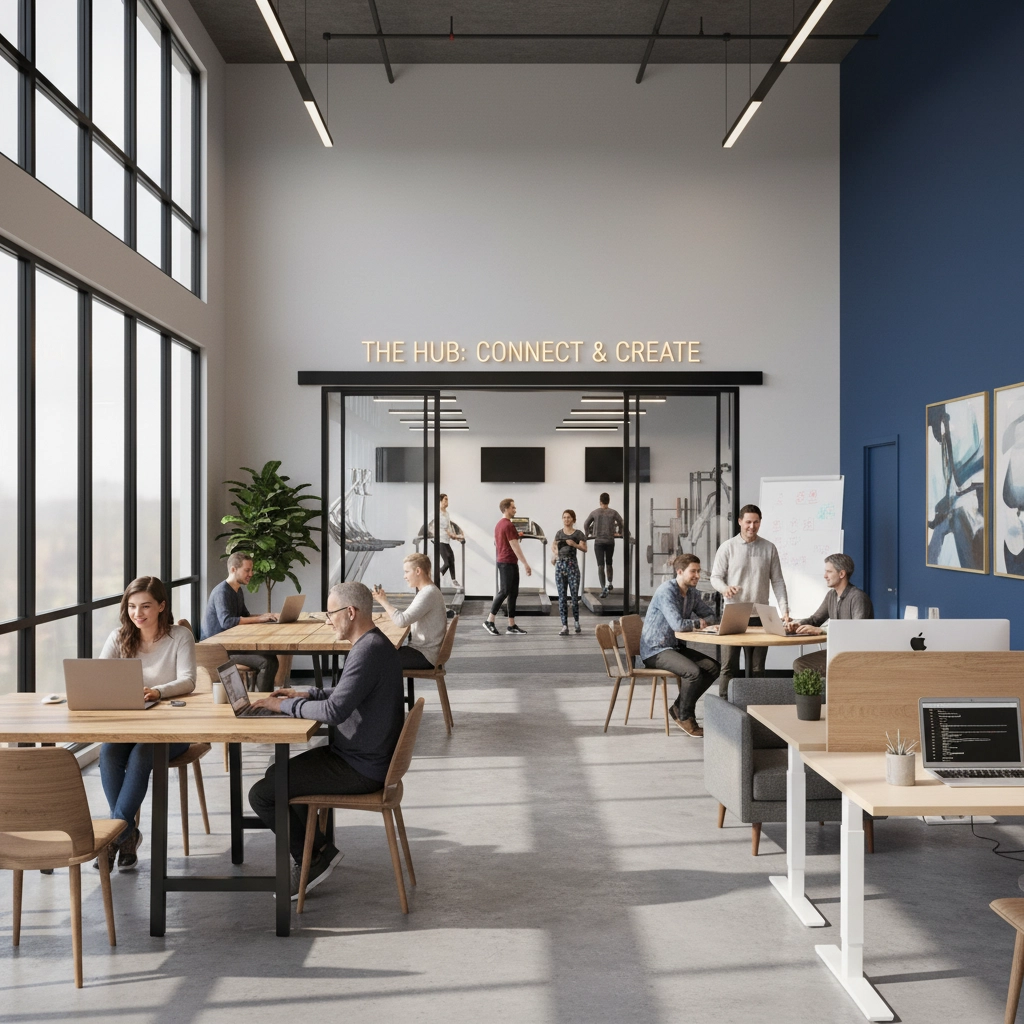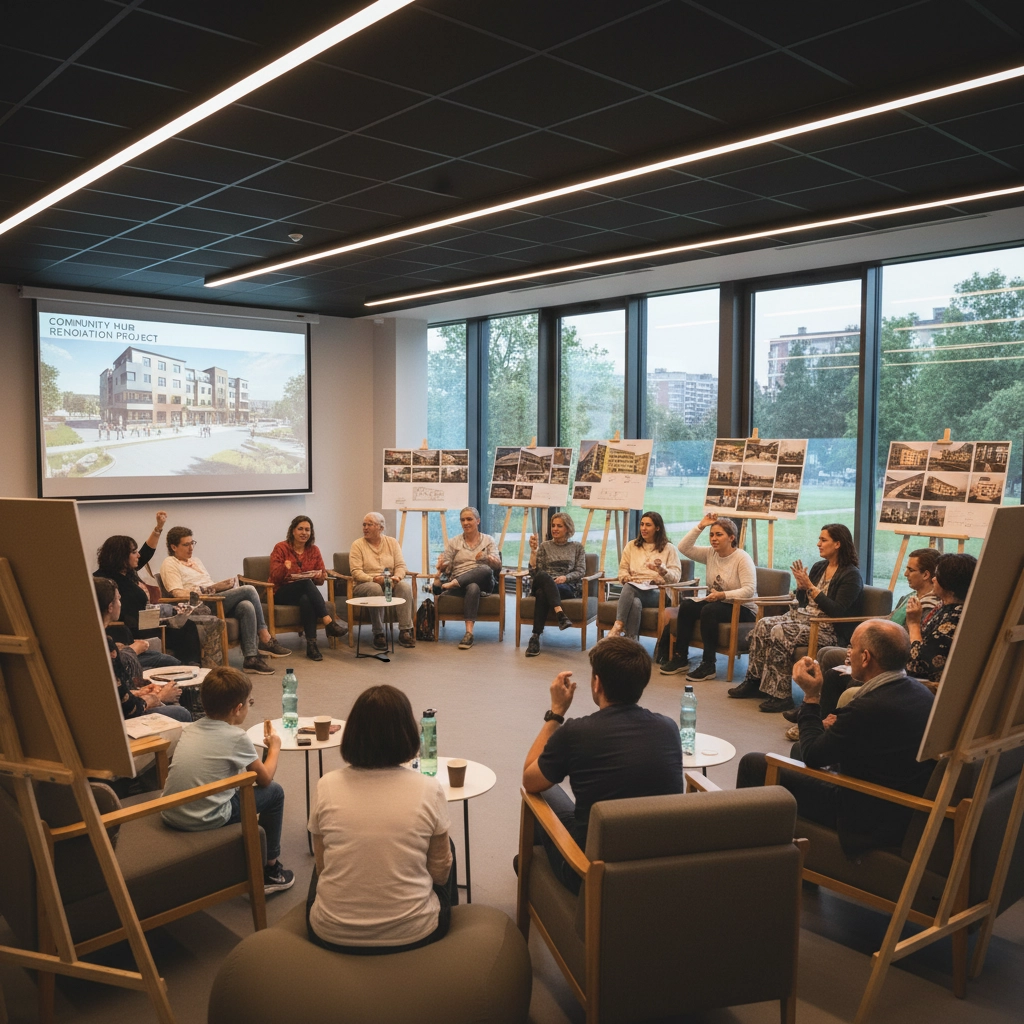The Ultimate Guide to Transforming Dead HOA Amenities: Everything You Need to Succeed
- luanneberk
- Nov 7
- 5 min read
We've all seen them: those forgotten corners of HOA communities where amenities sit empty, gathering dust and contributing nothing to resident satisfaction. Maybe it's the tennis court that's been converted into an unofficial storage area, or the community room that hasn't hosted an event in years. These "dead" amenities represent massive missed opportunities.
Here's the good news: transforming underutilized spaces doesn't have to break the budget or require starting from scratch. With the right strategy, you can breathe new life into these forgotten areas and create vibrant community hubs that residents actually want to use.
Why Amenities Die (And Why That's Actually Good News)
Before we dive into solutions, let's understand why amenities become underutilized in the first place. Usually, it's not because residents don't want community spaces: it's because the current offerings don't match what they actually need.
Common reasons include outdated features that don't appeal to modern lifestyles, poor maintenance that makes spaces uninviting, or simply a mismatch between what was built and what residents actually want to do. The silver lining? These spaces already exist, which means you're working with existing infrastructure rather than building from scratch.
Think of dead amenities as blank canvases. They're not failures: they're opportunities waiting for the right vision.
Spotting Your Community's Hidden Gems
The first step in any transformation is identifying which spaces have the most potential. Start by conducting an honest audit of your current amenities.
Walk through your community with fresh eyes. Which areas look tired or neglected? More importantly, pay attention to usage patterns. Are residents using your tennis court to play pickleball instead? That's valuable data about what they actually want.

Don't forget to check those forgotten corners: storage rooms, unused office spaces, or areas that were designed for one purpose but could easily serve another. These often represent the easiest wins because they require less structural work to transform.
Strategic Transformation Ideas That Actually Work
Now for the fun part: turning those identified spaces into amenities residents will love. Here are some proven strategies that deliver real results:
Convert Dead Storage Into Living Spaces
Those underutilized storage areas and vacant rooms? They're perfect candidates for transformation. Consider creating coworking spaces for remote workers (increasingly valuable in today's work-from-home world), flexible event rooms that can host everything from birthday parties to HOA meetings, or even community kitchens where residents can gather for cooking classes or potluck events.
Modernize Your Pool Area
If your pool area feels dated, strategic upgrades can make a huge difference. Adding splash pads creates family-friendly fun while using recirculating water systems that are both eco-friendly and cost-effective. You might also consider creating flexible poolside spaces that can transform into event venues during off-peak hours.
Reimagine Sports Facilities
Notice residents playing pickleball on your tennis courts? Instead of fighting it, embrace it. Converting courts to accommodate both sports or dedicating space specifically for pickleball shows you're responsive to actual community needs.

Create Multi-Purpose Community Hubs
The most successful amenity transformations often involve creating flexible spaces that can serve multiple purposes. A room that functions as a fitness studio in the morning, meeting space in the afternoon, and party venue on weekends maximizes usage and value.
The Power of Smart Design Choices
Functional improvements are crucial, but don't underestimate the impact of aesthetic upgrades. Sometimes a fresh coat of paint, better lighting, and some thoughtful landscaping can completely change how residents perceive a space.
Focus on creating inviting entryways: first impressions matter. Add some public art or decorative features that reflect your community's personality. Install better lighting for both safety and ambiance. Small details like comfortable seating areas and charging stations for devices can make spaces significantly more appealing.
Consider accessibility in all your upgrades. Ensure pathways are clear and well-lit, add rest areas with benches, and make sure all residents can comfortably use the improved amenities.
Planning Your Transformation Project
Successful amenity transformation requires more than just good ideas: it needs solid project management. Start by creating a comprehensive plan that includes realistic timelines, detailed budgets with contingency funds, and clear communication strategies for keeping residents informed.
Don't forget the legal side of things. Review your governing documents to understand what approvals you need and check with your insurance provider, especially if you're considering allowing outside groups to use your facilities. Getting these details sorted upfront prevents costly surprises later.

Budget strategically by prioritizing upgrades that deliver the biggest impact for your investment. Sometimes the most transformative changes are surprisingly affordable: like turning an unused room into a coworking space with some tables, chairs, and strong Wi-Fi.
Getting Your Community On Board
Here's where many transformation projects succeed or fail: community buy-in. Residents who feel heard and involved in the process are much more likely to embrace and actively use the upgraded amenities.
Start with transparent communication. Explain not just what you're planning to do, but why it will benefit the community. Share your vision clearly and frequently. Host community meetings where residents can ask questions and provide input.
Consider sending surveys to gather resident preferences before finalizing plans. Which amenities matter most to them? What features would make them more likely to use community spaces? This input helps ensure you're investing in transformations that will actually get used.
Keep residents updated throughout the construction process. Share progress photos, explain any temporary inconveniences, and celebrate milestones. The more involved residents feel, the more excited they'll be about the finished product.
Focus on What Residents Really Want
While every community is different, some amenities consistently drive high satisfaction. Swimming pools with family-friendly features remain among the most valued HOA amenities. Well-designed fitness centers, beautiful landscaping, and flexible social spaces also rank highly.
The key is understanding your specific community's demographics and interests. A community with many young families might prioritize playground upgrades and splash pads, while a retirement community might prefer quiet gathering spaces and wellness facilities.

Don't overlook simple additions that create big value. Outdoor movie nights, seasonal events, and community gardens often generate more daily engagement than expensive facility upgrades.
Making It Work Year-Round
One mark of a successful amenity transformation is creating year-round value. If your community has seasonal amenities that sit empty for months, consider how to extend their usefulness.
Pool areas can include covered spaces for off-season events. Outdoor courts can be designed to accommodate different sports depending on the season. Multi-purpose rooms can adapt their function based on community needs throughout the year.
Measuring Your Success
After completing your transformation, track whether it's achieving your goals. Monitor usage patterns: are residents actually using the upgraded amenities? Conduct satisfaction surveys to gather feedback. Pay attention to property values and overall community satisfaction metrics.
Most importantly, observe the less quantifiable changes. Are you seeing more neighbors chatting? Are families spending more time in common areas? These social improvements often represent the biggest wins from amenity transformations.
Ready to Transform Your Community?
Turning dead HOA amenities into vibrant community assets isn't just about improving facilities: it's about creating spaces where residents want to spend time, connect with neighbors, and truly enjoy community living.
The best part? You don't need a massive budget or complete reconstruction to make meaningful improvements. Start with one underutilized space, apply these strategic transformation principles, and build from your successes.
Ready to bring new life to your community's forgotten amenities? Visit Play Academy to discover recreation services and programs that can help transform your HOA into the vibrant community residents love to call home.

Comments